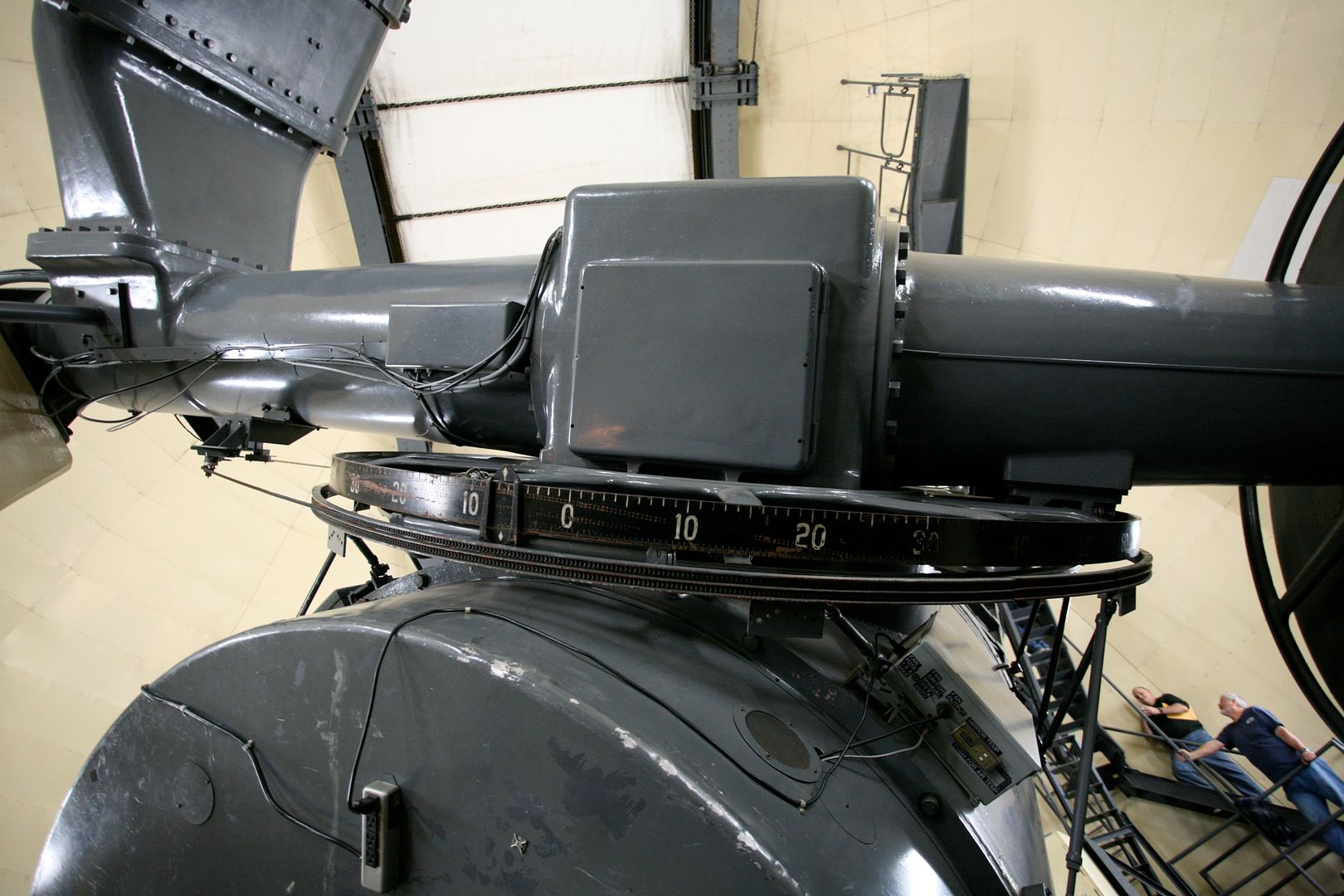A few years ago I had the pleasure of visiting McDonald Observatory on Mt. Locke west Texas. This year is the observatory's 75th anniversary, making it a good time to trot out the pictures I took on my trip.
The observatory is home to numerous research telescopes, a vigorous public outreach program, and wonderful dark skies that are largely free from light pollution. West Texas is usually cloud free, but clouds and rain dominated during
my visit - possibly because I was to have eyepiece time on one of the
scopes there.
There was just enough sunlight to create this rainbow that appeared over the dome of the observatory's largest telescope, the 9.2-meter Hobby-Eberly Telescope (HET).
The HET is the newest of the research telescopes on the site, having been dedicated in 1997. The telescope has a giant segmented mirror (shown below) that is 11.1 x 9.8 meters in size, yet because of its design, only 9.2 meters of aperture is used at any one time.
Light reflects off of the primary mirror segments to a spectrograph located high above the primary. No traditional photographic images are recorded, so it doesn't produce the pretty pictures that most people expect to see. Instead, to the astronomers it provides much more. A spectrograph breaks down the light from astronomical objects into their component colors which allows for measurements of temperature, composition, and motion to be made--basically providing the clues astronomers need to tease out the details of all sorts of objects.
Interestingly enough, just like the Large Binocular Telescope in Arizona (see my previous post on it), there's a Meade telescope (below, left) being used along side one of the largest telescopes in the world.
Also at McDonald Observatory is the 2.7-meter (107") Harlan J. Smith Telescope (below).
This telescope was finished in the late 1960s and is still used for astronomical research. There are even occasional eyepiece viewing nights with this 107-inch telescope.
Finally, there's the oldest and smallest of the big three telescopes on site--the 2.1-meter (82") Otto Struve Telescope. It is a beauty inside and out.
The 82-inch telescope was my reason for visiting McDonald Observatory. I was to enjoy a night of looking through the telescope along with a group of other telescope enthusiasts, but the weather didn't cooperate.
The only benefit to the poor weather was that were were allowed to turn up the lights and explore the telescope. That's me above with the 82". As you have seen, the HET, the 107" and the 82" telescope are all uniquely different telescopes. They are each a product of the technology and the budgets of their unique era.
When the 82" was brand new, it was the second largest telescope in the world, with only the 100" at Mt. Wilson Observatory being larger.
The 82-inch telescope has setting circles (used to ensure the proper pointing of the telescope), something long gone from modern observatory instruments:
I had the pleasure of photographing it from just about every angle, including looking right down at it's primary mirror:
We didn't get to see any starlight that night, but that's my image reflected off of the mirror.
The HET is an impressively huge product of the modern era that can probe the universe itself in ways not even dreamed of when the 82" was built. The HET dwarfs the 82" in every respect, yet the 82" is my favorite telescope at the observatory. It is a timeless classic that has been wonderfully maintained by the team at McDonald Observatory.
I highly recommend visiting McDonald Observatory. They have an impressive array of tours, daytime solar observing sessions, evening observing sessions and more.














No comments:
Post a Comment